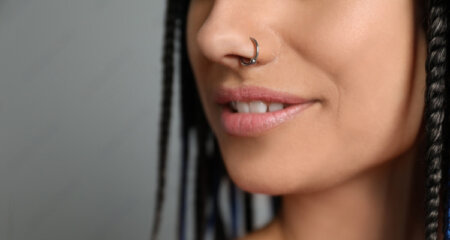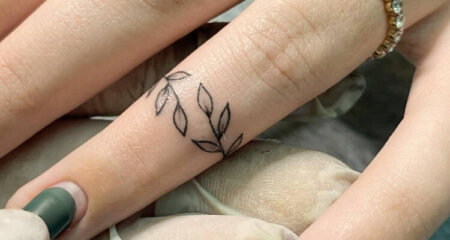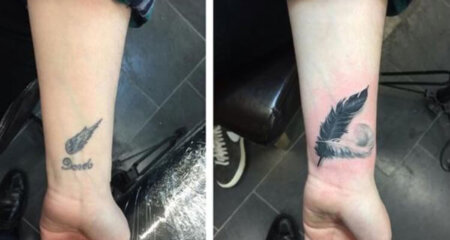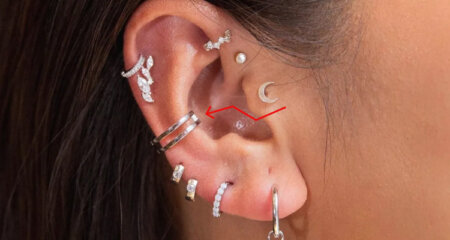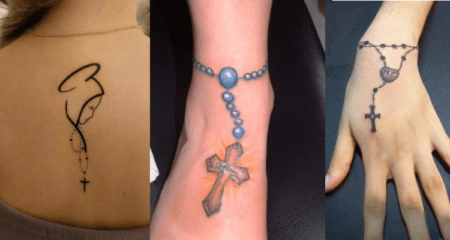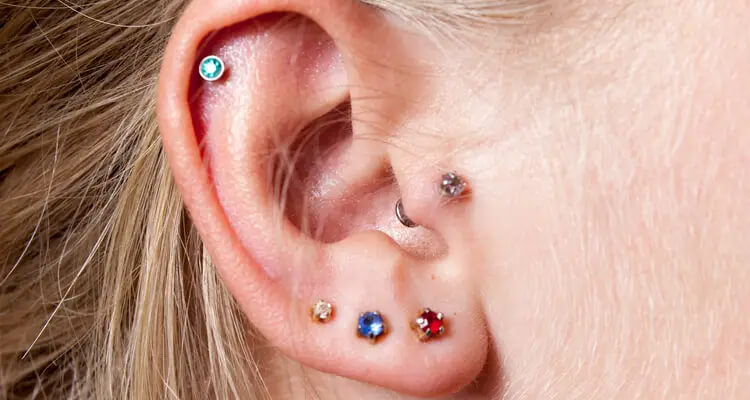
10 Things You Should Know Before Getting First Piercing
Posted on
Getting your first piercing can be a stimulating adventure, but it can also be stressful. Being well-informed before taking the plunge and getting a piercing is essential.
From selecting the right piercing to choosing a reputable piercer, many factors must be considered. In this guide, we’ll cover ten things you should know before getting your first piercing so that you can feel confident and prepared for this new adventure.
So, whether you’re considering a nose ring, belly button piercing, or something more adventurous, let’s dive in and explore the world of body piercing together!
➺ It’s better to go by yourself to piercing
➼ When it comes to getting a piercing, whether it’s your first or fifth, it’s always a good idea to go alone. While it might be tempting to bring a friend or family member along for support, there are several reasons why going solo is the better choice.
➼ Going alone allows you to focus on yourself and your piercing. Getting a piercing can be nerve-wracking, and having someone else, there can increase stress levels. By going alone, you can take the period to be physiologically ready and get into the proper headspace for the piercing experience.
➼ Going alone also means you won’t have any distractions. If you bring a friend, they might want to chat or take photos, distracting you and the piercer. This could lead to mistakes during the piercing procedure, which you won’t like.
➼ Going alone also ensures you can make your judgments without outer impact. If you bring a friend, they might have their own opinions on what piercing you should get or where you should get it. While it’s good to have advice, the judgment should be yours independently.
➼ Lastly, going alone allows you to build a better relationship with your piercer. Having one-on-one time with your piercer will enable you to ask questions, get to know them better, and build trust. This can direct to a good and comfortable piercing experience.
➼ While it’s always good to have support, going alone for a piercing is the better choice. It allows you to focus, avoids distractions, ensures you make your own decisions, and allows for a better relationship with your piercer.
➺ Always eat something beforehand

➼ If you’re getting your first piercing, eating something beforehand is essential. Many people may need to realize the importance of eating before getting a piercing, but it can create a big difference in your general venture.
➼ Eating before a piercing can help prevent lightheadedness and fainting. Getting a piercing can be a stressful experience for some, and it’s not uncommon for people to feel faint or dizzy during or after the piercing. A meal beforehand can help regulate your blood sugar measurements and stop this from occurring.
➼ Eating before a piercing can also help reduce nausea. Some people may experience nausea during or after a piercing, which can be uncomfortable and potentially lead to vomiting. Eating a light meal beforehand can help calm your stomach and lower the probability of sickness.
➼ Eating before a piercing can also give you more energy. Getting a piercing can be physically and mentally draining, and having a meal beforehand can give you the power to get through the experience.
➼ Eating before a piercing can help speed up the healing process. Your body needs energy and nutrients to heal, and having a meal before your piercing can provide your body with the necessary resources to start the healing process.
➼ It’s essential to eat before getting your first piercing. Doing so can help prevent lightheadedness, reduce nausea, give you more energy, and speed up healing. Be sure to eat a light and healthy meal before your appointment, and remember to stay hydrated!
➺ Be sure you are legally old to get your first piercing
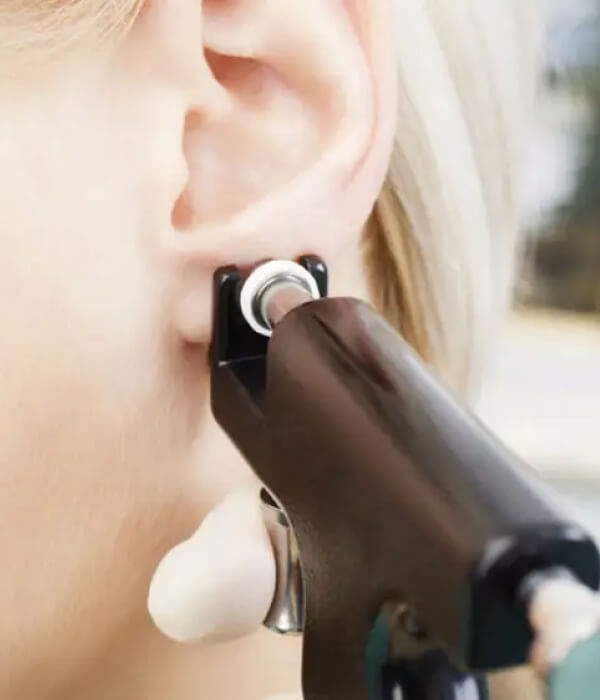
➼ Before getting your first piercing, it’s crucial to ensure you are legally old enough to do so. Different regions and countries have other laws and regulations regarding piercing age limits, and it’s important to know what they are in your area.
➼ In many places, the legal age for getting a piercing without parental consent is 18. However, some regions allow minors to get piercings with parental permission. This may require a signature from a parent or legal guardian, or they may need to be present during the piercing procedure.
➼ It’s necessary to cite that these laws exist for a reason. Piercings are a form of body modification with threats and possible difficulties, such as infection, disfigurement, and allergic reactions. Minors may not fully understand the potential risks and may be unable to make informed decisions about getting a piercing.
➼ If you are under the legal age limit for piercings in your area, it’s essential to wait until you are old enough or until you have the proper consent from a parent or legal guardian. Trying to get a piercing underage or without permission can lead to legal consequences and potentially harm your health.
➼ Ensure you are legally old enough to get a piercing in your area before getting one. Follow the laws and regulations in your region, and always make informed decisions about your health and body modification choices.
➺ Everything should be sterilized during the process
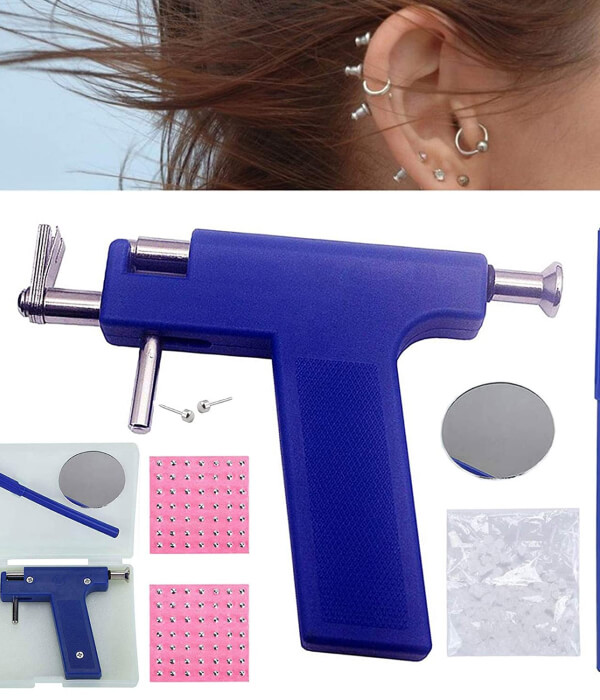
➼ One of the most important things to consider when getting a piercing is the equipment’s and the environment’s cleanliness and sterility. All tools and materials used during the piercing process should be adequately sterilized to reduce the risk of infection and other complications.
➼ A reputable piercer should have a clean and organized workspace free from clutter and potential contaminants. The piercer should also use single-use, disposable needles, and tools, such as gloves, clamps, and forceps, discarded after each use. Any reusable instruments should be sterilized between uses.
➼ Sterilization methods can vary, but the most common is autoclaving. This process uses steam and pressure to kill bacteria, viruses, and other pathogens on tools and materials. Before a piercing, the piercer should show you the sterilization equipment and explain the process.
➼ In addition to equipment sterilization, the piercer should sanitize the area of the body being pierced and apply a sterile marker to indicate the precise location of the piercing. After the piercing, the piercer should provide aftercare instructions and recommend cleaning solutions to reduce the risk of infection.
➼ It’s important to note that if you detect any redness, swelling, or discharge after your piercing or develop a fever or different symptoms, you should reach your piercer or a medical proficient. These can be symptoms of an infection or further complications.
➼ Getting a piercing involves more than just picking out a piece of jewelry. Ensuring that all equipment and materials used during the process are appropriately sterilized is crucial to reduce the risk of infection and other complications. A reputable piercer should take the necessary precautions to provide a safe and clean piercing experience.
➺ Skip the piercing gun
➼ When getting a piercing, selecting the appropriate way for the job is important. While piercing guns may seem quick and easy, they can be more damaging than helpful. Skipping the piercing gun and opting for other methods is generally recommended.
➼ One reason to avoid piercing guns is that they can cause more tissue damage than other methods. The guns use a spring-loaded mechanism that forces the jewelry through the skin, which can cause trauma to the surrounding tissue. This trauma can make the piercing more painful and increase the healing time.
➼ Another issue with piercing guns is that they cannot be adequately sterilized. The guns have many small parts and crevices that trap bacteria and other pathogens. This means there is a higher risk of infection with a piercing gun than with other methods.
➼ In contrast, other piercing methods, such as a hollow needle or a dermal punch, are less invasive and cause less tissue damage. They also allow for more precise jewelry placement and are typically safer and more hygienic than piercing guns.
➼ It’s also worth noting that piercing guns are illegal for use on specific body parts in some areas. This is because of the higher risk of injury and complications associated with the help of these devices.
➼ It’s generally best to avoid piercing guns and opt for other methods when getting a piercing. The trauma and tissue damage caused by the guns and the higher risk of infection make them a less-than-ideal choice for body modification. Confer a reputed piercer to pick the finest method for your piercing.
➺ It will hurt, but everyone has a diverse experience
➼ Getting a piercing can be a painful experience, but the ache level can differ widely relying on the person and the location of the piercing. It’s important to understand that everyone’s pain tolerance and experience are different, and there is no one-size-fits-all answer regarding how much a piercing will hurt.
➼ Aspects that can influence the level of pain include:
- The size and thickness of the needle.
- The type of jewelry is inserted.
- The location of the piercing.
- The person’s discomfort toleration.
➼ For example, a lip piercing may be more painful than an earlobe piercing because the lips have more nerve endings.
➼ It’s also worth noting that while the initial piercing may be painful, the discomfort typically subsides relatively quickly. Most people describe the pain as a brief, sharp pinch followed by a throbbing sensation. After the initial piercing, there may be some soreness and swelling for some days, but this can usually be handled with OTC pain medication and proper aftercare.
➼ If you’re worried about the ache associated with having a piercing, you can do a few things to minimize discomfort. Eating a small meal beforehand is recommended, as staying hydrated and avoiding caffeine and alcohol can increase sensitivity. Taking in-depth breaths and practicing composure can lessen stress and make the experience more bearable.
➼ Getting a piercing will likely involve some level of pain, but the extent of that pain can vary widely depending on the individual and the location of the piercing. While everyone’s experience differs, minimizing discomfort can make the process more manageable. Remember to consult with a reputable piercer, follow proper aftercare instructions, and be patient as your piercing heals.
➺ Expect some initial bleeding and irritation
➼ When you get a piercing, it’s essential to understand that some bleeding and irritation are standard parts of the healing process. As with any injury, the body responds to a piercing by sending blood flow to the area, which can cause some bleeding and swelling.
➼ Additionally, the jewelry inserted into the piercing can irritate the surrounding tissue, which can cause redness, tenderness, and discomfort. This is particularly true in the first few days after the piercing, as the body is still adjusting to the new jewelry, and the healing process is just beginning.
➼ While some bleeding and irritation are normal, monitoring the piercing carefully and contacting your piercer if you notice any signs of infection or other complications is essential. These can include excessive bleeding, pus or discharge, extreme redness or swelling, a fever, or other symptoms of illness.
➼ To minimize bleeding and irritation, following proper aftercare instructions is essential. This may include cleaning the piercing regularly with a saline solution or other cleaning solution recommended by your piercer, avoiding tight clothing or other sources of friction around the piercing, and avoiding activities that may cause trauma to the area, such as contact sports or heavy lifting.
➼ It’s also essential to recognize that every individual’s healing procedure is diverse; some may experience more bleeding and irritation than others. However, with proper aftercare and attention to healing, most piercings will heal relatively quickly and without significant complications.
➼ It’s normal to experience some bleeding and irritation after getting a piercing. This is a natural part of the healing process, and with proper aftercare, most piercings will heal quickly and without complications. If you have any problems, symptoms of inflammation, or other issues, don’t hesitate to reach your piercer for guidance and advice.
Also Read : Do Piercing Affect Job Opportunities And Career
➺ You will need to observe for symptoms of infection
➼ After getting a piercing, watching the area for disorder indications is important. Infection can occur when bacteria or other pathogens enter the body through the piercing site and can cause a range of symptoms, including redness, swelling, tenderness, and pus or discharge from the site.
➼ While some levels of redness, swelling, and tenderness are standard parts of the healing process, it’s essential to be aware of any changes in the appearance or behavior of the piercing.
➼ If you detect any of the following indications of infection, it’s vital to pursue medical help immediately:
- Excessive redness or swelling around the piercing site
- Ache or tenderness that gets bad rather than getting healed with time
- Pus or discharge that is yellow, green, or has a foul odor
- A fever or other symptoms of illness
➼ The inflammation can sometimes direct to more severe difficulties like abscesses, scarring, or even sepsis. This is why it’s crucial to monitor the piercing carefully and seek medical attention if you notice any signs of infection or other issues.
➼ To lessen the chance of infection, following proper aftercare instructions is essential. This may comprise cleansing the piercing consistently with a saline blend or other cleaning solution recommended by your piercer, evading touching the piercing with unclean hands, and evading activities that expose the piercing to bacteria or other pathogens.
➼ While the infection is a potential risk after getting a piercing, it’s important to remember that most piercings heal without complications. By monitoring the piercing carefully, following proper aftercare instructions, and seeking medical attention if necessary, you can minimize the risk of infection and ensure a smooth healing process.
➺ Skip swimming for a while
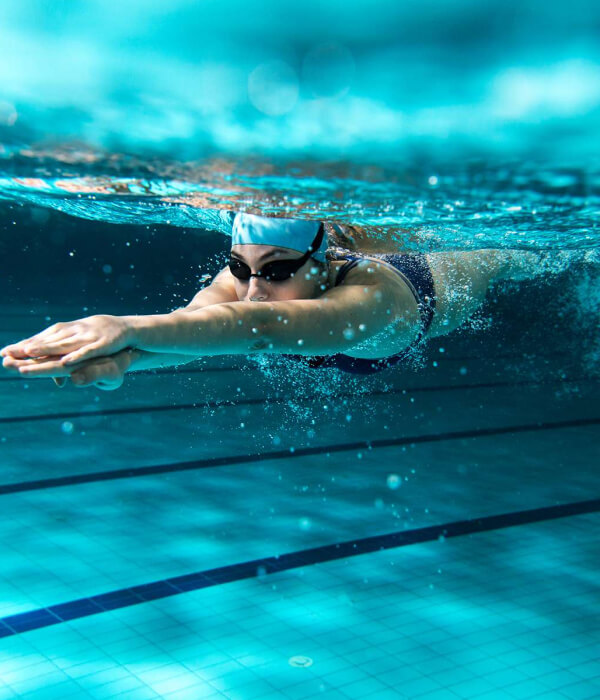
➼ If you’ve recently gotten a piercing, it’s important to avoid swimming for some time. This is because swimming pools, hot tubs, and natural bodies of water can all harbor bacteria and other pathogens that can increase the risk of infection and slow the healing process.
➼ Additionally, submerging a new piercing in water can cause the skin to soften and make it more vulnerable to trauma or damage. This can increase the risk of tearing or stretching the piercing, slowing the healing process and increasing the risk of infection.
➼ Most piercers recommend avoiding swimming for at least 2-3 weeks after getting a piercing. During this period, it’s crucial to hold the piercing clean and dry and evade uncovering it to any sources of moisture or wetness.
➼ If you need to swim during the healing process, there are a few steps to minimize the risk of complications. These may include:
- Covering the piercing with a waterproof bandage or other protective covering
- Avoiding submerging the piercing entirely in water
- Rinsing the piercing with clean water and applying aftercare products immediately after swimming
➼ However, it’s generally best to avoid swimming until the piercing has fully healed and your piercer has given you the go-ahead to resume normal activities.
➼ While it can be tempting to dip in the pool or ocean after getting a new piercing, it’s important to avoid swimming for some time to minimize the risk of infection and ensure a smooth healing process. By following proper aftercare instructions and avoiding activities that may expose the piercing to water or moisture, you can help ensure your new piercing heals quickly and without complications.
➺ If you are recently pregnant, you should wait to get pierced
➼ If you have recently been pregnant, it is recommended that you delay till succeeding your pregnancy and breastfeeding period are over before getting a piercing. This is because incubation and feeding can induce transformations in the body that may increase the risk of complications during the piercing process and the healing period.
➼ During pregnancy, hormonal changes can affect the body’s ability to heal and can also cause changes in the skin that may make it more difficult for the piercing to heal properly. Additionally, pregnancy can weaken the immune system, increasing the risk of infection.
➼ If you are breastfeeding, getting a piercing can also be risky, as it can increase the risk of infection and cause damage to the breast tissue, affecting milk production.
➼ For these reasons, it is generally recommended to wait until after your pregnancy and breastfeeding period before getting a piercing. This will give your body time to heal and recover and help minimize the risk of complications.
➼ If you are unsure whether it is safe to get a piercing, it’s always best to consult your healthcare provider. They can provide personalized advice based on your specific health needs and circumstances and help you determine the best action for your situation.
➼ While getting a piercing can be a fun and exciting way to express your individuality, it’s essential to wait until after your pregnancy and breastfeeding period is over before getting pierced. By giving your body time to heal and recover, you can minimize the risk of complications and ensure a smooth healing process.
➺ Conclusion
➼ Getting your first piercing can be thrilling, but it’s crucial to be prepared and informed before you take the plunge. Following the advice and procedures summarized in this article will ensure a secure, comfortable, and successful piercing experience.
➼ Choosing a reputed piercer who utilizes hygienic tools and observes proper hygiene and safety protocols is essential. You should also be aware of the risks and potential complications associated with piercing and take steps to minimize the risk of infection and ensure a smooth healing process.
➼ Additionally, it’s essential to be patient and take good care of your new piercing, following proper aftercare instructions and avoiding activities that may increase the risk of complications.
➼ By keeping these tips in mind and approaching your first piercing with a cautious and informed mindset, you can help ensure your new piercing is a safe, enjoyable, and positive experience. We hope this blog on ten things you should know before getting your first piercing is useful to the readers.

